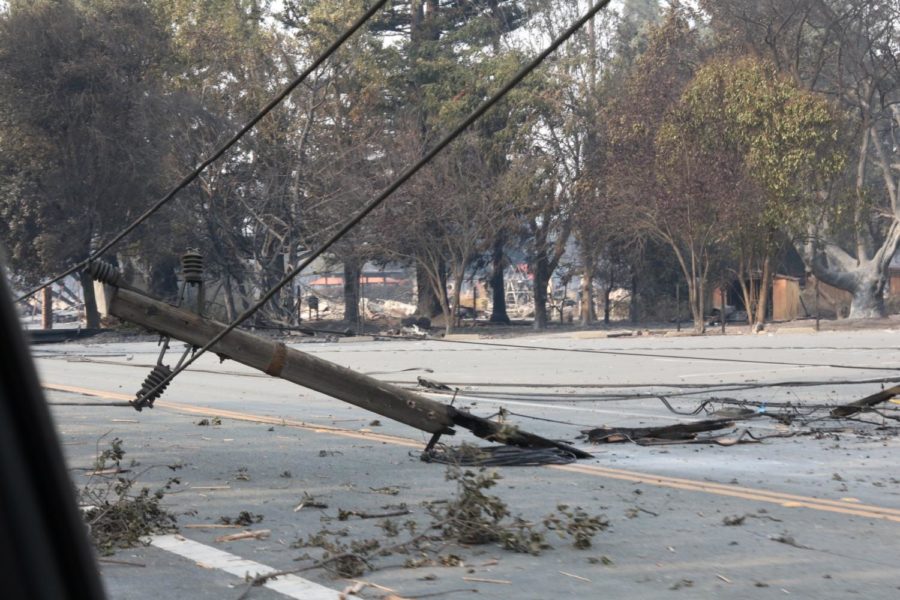The Tubbs fire is now one of the five deadliest wildfires in California’s history, but may end up being the worst.
We live in a world of hazards. There are hazards associated with driving a car. There are hazards associated with cooking. There are hazards associated with using a computer. Etcetera, etcetera, etcetera. As a former Fire Marshal of the county of Sonoma I spent most of my adult life dealing with hazard reduction. At one point I took a work related class where we learned the mantra, “If it is predictable, it is preventable.” Pretty simple. We can all get that- right?
High wind events, are usually very predictable. These wind events cause havoc on our electrical utility system. Power lines can arc and or drop, and in some cases start fires. It’s predictable.
Whenever PG&E has to do work on the power lines, if it involves having to shut down the utility to do the work, they let the users know. I myself have had those notices and phone messages letting me the power will be out on such and such day at such and such time. They have a system set up for this and it works. Not a big deal for us consumers. Especially if we know about it. We can work around the temporary loss of electricity. It’s predictable.
So if wind events are predictable, and the utility company has a system to inform folks about temporary power interruptions, why don’t we do the same thing in wind events that we do for power grid maintenance and service? With high winds predicted, why doesn’t the utility company simply send out a notification that during the wind event, the power will be shut down for a couple hours until it is safe again? That has to be cheaper, easier and safer than putting the pieces back together after the predictable downed lines and ensuing fires.
Imagine how many deaths could have been prevented and how much property loss and unemployment could have been prevented if on Sunday night, Oct. 8, the utility company simply let folks know the power would be down for a couple hours while folks were sleeping. Heck, in some parts of the world, the power is only on for a couple hours a day. Surely we could deal with that – right?
The wind events are predictable, the power outages could be predictable, and the losses are preventable, if only we can deal with the minor inconveniences.



Kelly Caul • Jul 19, 2018 at 12:12 pm
I hear you asking why PGE did not call customers. Private companies, including PGE, are not an Emergency Response System. That is the County’s responsibility. And they did a terrible job during the fires.
They may have endangered 10’s of 1000’s by their messy, utterly unprepared Response Plans: for Floods, not Fires. They completely misunderstood the nature and potential of the fires, from the beginning.
But don’t take my word for it. Read the California Office of Emergency Services specific assessment about Sonoma County (lack of) Response. COES spares no feelings and minces no words:
https://www.documentcloud.org/documents/4388831-Cal-OES-Public-Alert-and-Warning-Program.html
Besides, if we blame PGE for faulty everything, why would we put our lives in a hypothetical PGE emergency response call system?
[An aside: phone numbers-as-safety-nets are faulty system by nature: they are attached to the bill-payer. That bill-payer may live in Oregon because his vacation home is in Sonoma County, or he pays for his mother’s bill. That’s why 911 asks you to verify your address and phone number from the start, so responders go to the location of the actual situation. To assume a phone=address association is a simple and deadly mistake.]